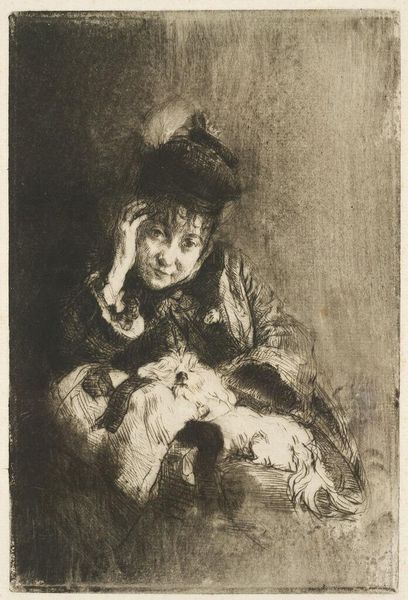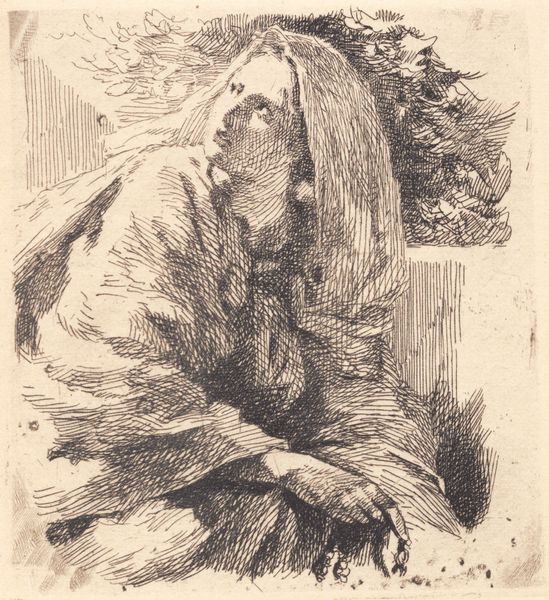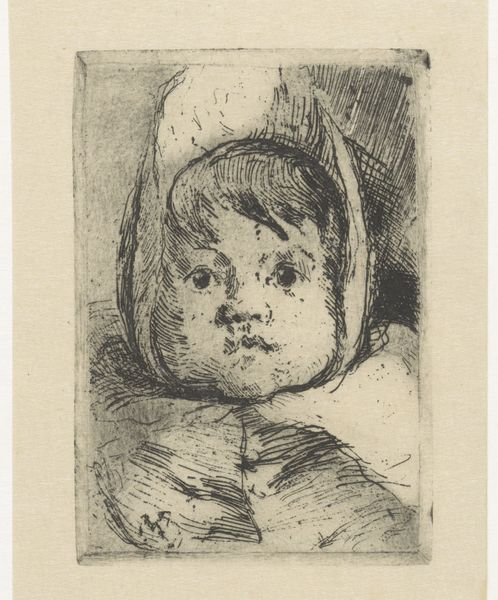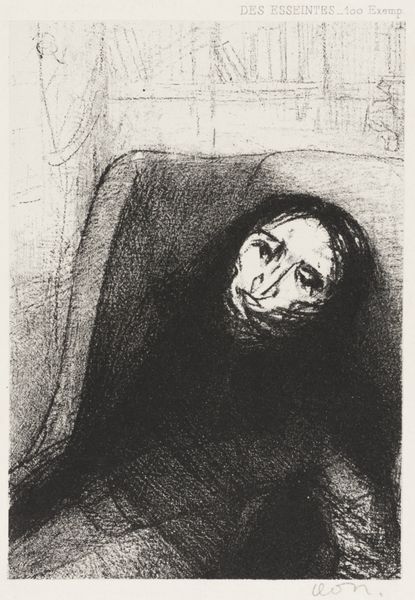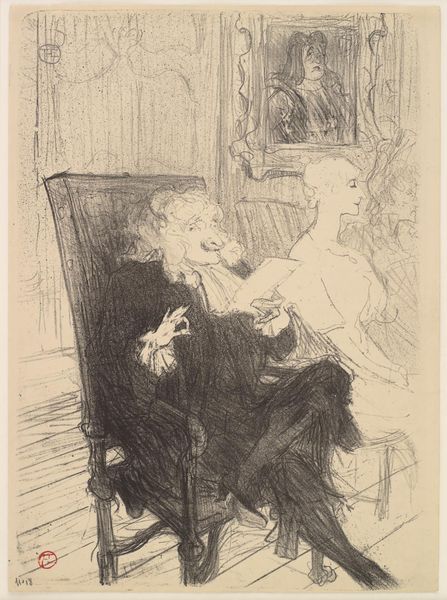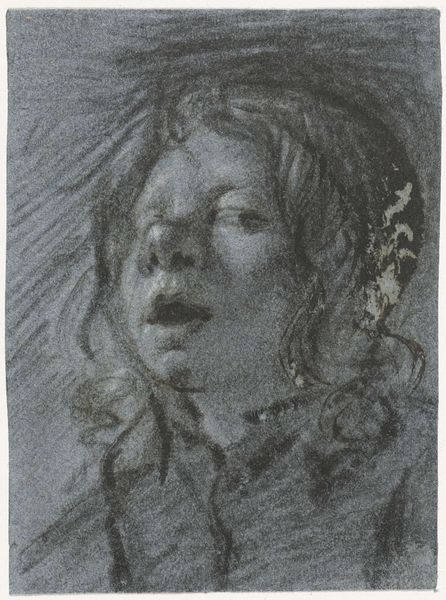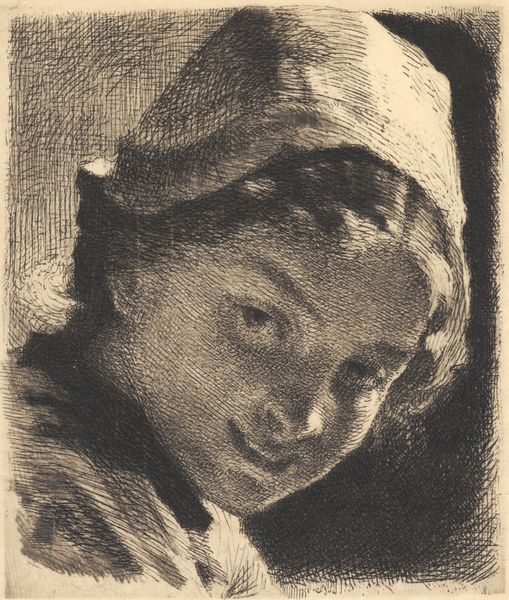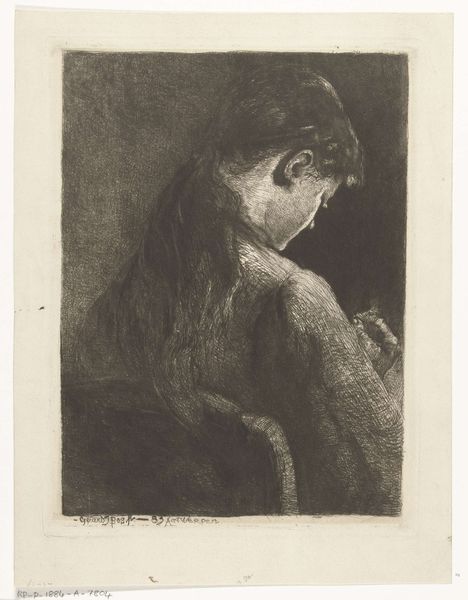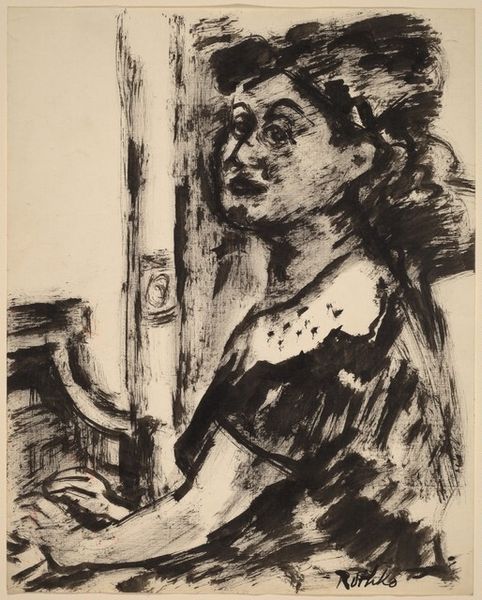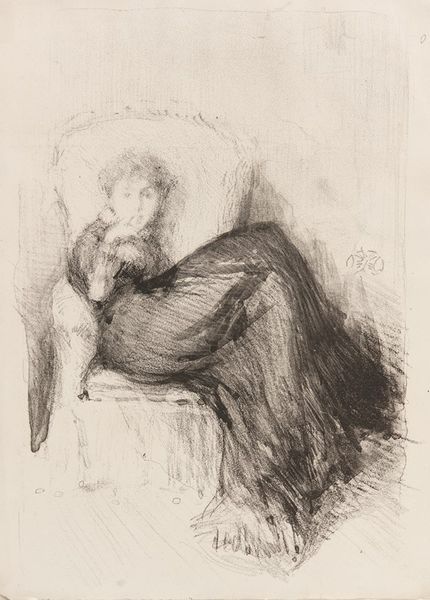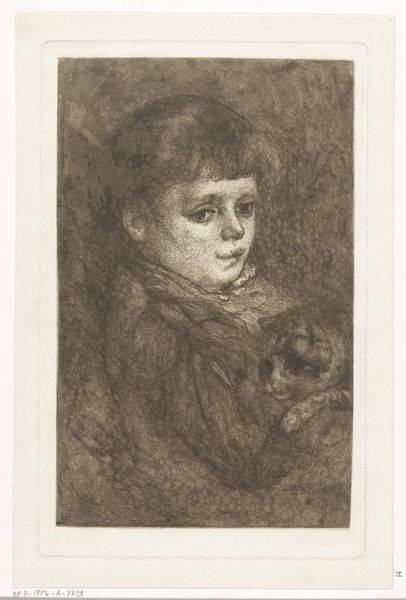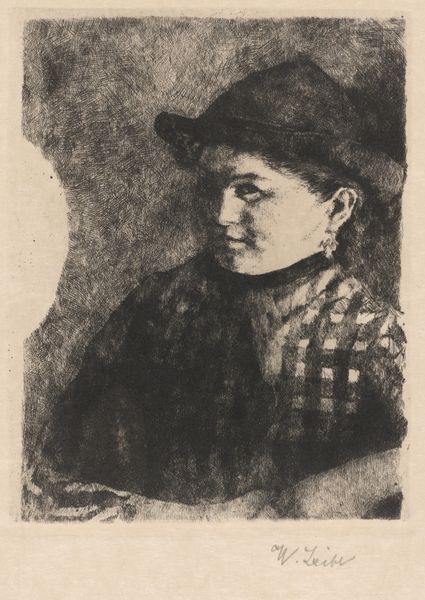
print, etching
#
portrait
# print
#
etching
#
figuration
#
modernism
Copyright: National Gallery of Art: CC0 1.0
Curator: Standing before us, we have Marc Chagall's etching, "The Young Widow," created sometime between 1927 and 1930. Editor: My first impression is of raw, almost agonizing emotion. The upward tilt of her face, the stark contrast... it’s like a visual scream, barely contained by the lines. Curator: Exactly. The woman’s pose, combined with Chagall's use of modernism, begs for interpretations that consider the historical and societal context of bereavement for women in the early 20th century. Her clasped hands at the chest denote sorrow and resilience. Editor: Those clasped hands remind me of traditional images of saints or Mary, figures who embodied suffering. The artist definitely tapped into the archetype of female sorrow, echoing through centuries of artistic expression. The upward gaze can represent hope, a connection to divinity and eternal life... almost every culture carries variations on this theme. Curator: Indeed. By incorporating this familiar figuration, Chagall perhaps is trying to communicate more universal experience of bereavement but the question remains to what degree this universal approach ignores social constructs that specifically oppressed widowed women at that time. The artist may invite us to discuss this very dichotomy. Editor: There is a duality there—tradition meeting the very modern rendering. But what’s so compelling is the etching. Those fine lines amplify a kind of rawness. It mirrors the raw nerves of grief, and its power comes from that delicate fragility. It suggests there is profound spiritual dimension to mourning as well as human pain. Curator: Ultimately, I see "The Young Widow" as more than just an expression of individual sorrow. It can spark a dialogue around power structures. Chagall seems to position his figure against norms while speaking through conventional themes. Editor: For me, this print is a testament to the enduring power of symbols. It tells us loss transcends time; yet we understand more deeply now through works like this, in turn, what has been and what we may transcend to face grief more wholly.
Comments
No comments
Be the first to comment and join the conversation on the ultimate creative platform.
